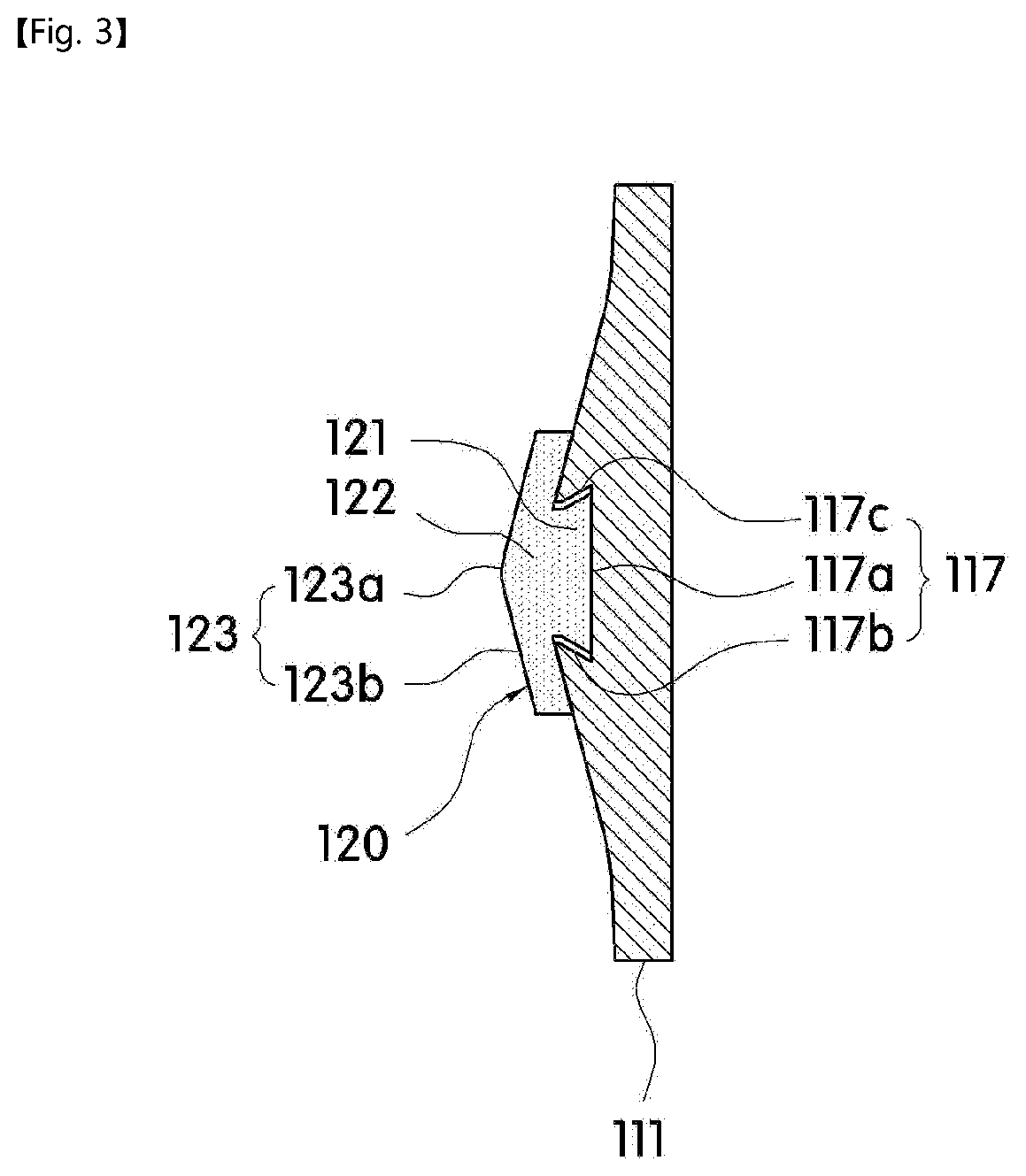Heat dissipating elastic body composition and heat dissipating elastic body realized therefrom
a technology of elastic body and heat dissipation body, which is applied in the direction of heat exchange elements, electrochemical generators, chemistry apparatus and processes, etc., can solve the problems of affecting the durability of various parts, affecting the heat dissipation effect of the heating element, so as to minimize vibration, minimize deterioration, and reduce the effect of heat generation
- Summary
- Abstract
- Description
- Claims
- Application Information
AI Technical Summary
Benefits of technology
Problems solved by technology
Method used
Image
Examples
example 1
[0158]100 parts by weight of methyl vinyl silicone gum having a weight average molecular weight of 540,000 and a viscosity of 10,000,000 cps as a base resin was put into a kneader, and then 22 parts by weight of fumed silica having a specific surface area of 275 m2 / g and an average particle size of 12 nm as a filling-reinforcing agent, and 6.25 parts by weight of methyl vinyl silicone having a polymerization degree of 17 as a physical property-enhancing component were further added thereto, followed by kneading for 90 minutes. Afterward, 150 parts by weight of alumina having an average particle size of 8 μm was put into the kneader with respect to 100 parts by weight of the base resin and mixed. The resulting mixture was mixed in a 2-roll, and 0.31 part by weight of an organic peroxide, 2,5-dimethyl-2,5-di(t-butyl peroxy)hexane, as a vulcanizing agent was added with respect to 100 parts by weight of the base resin, and then mixed and defoamed, thereby preparing a heat-dissipating el...
examples 2 to 3
[0160]A heat-dissipating elastic body was prepared as shown in Table 1 below in the same manner as described in Example 1, except that the composition of a heat-dissipating elastic body composition was changed as shown in Table 1 below.
experimental example 1
[0162]Physical properties of the heat-dissipating elastic bodies prepared in Examples 1 to 3 and Comparative Examples 1 and 2 were evaluated and shown in Table 1 below.
[0163]First, thermal conductivity was measured by a method according to ASTM E 1461. In addition, hardness was measured using a hardness tester (Shore-A). In addition, a tensile strength and an elongation rate were measured using a universal testing machine (UTM).
TABLE 1ComparativeComparativeExample 1Example 2Example 3Example 1Example 2Heat-Heat-150225300130320dissipatingdissipatingelastic bodyfillercomposition(parts byweight)Heat-Thermal0.71.01.30.41.4dissipatingconductivityelastic body(W / m · k)Shore A5560704080Tensile5953456233strength(kgf / cm2)Elongation1451057516051(%)
[0164]As shown in Table 1, it can be confirmed that Examples 1 to 3 are superior in thermal conductivity, hardness, tensile strength and an elongation rate, compared with Comparative Examples 1 and 2 in which a heat-dissipating filler was included at ...
PUM
| Property | Measurement | Unit |
|---|---|---|
| Temperature | aaaaa | aaaaa |
| Temperature | aaaaa | aaaaa |
| Temperature | aaaaa | aaaaa |
Abstract
Description
Claims
Application Information
 Login to View More
Login to View More - R&D
- Intellectual Property
- Life Sciences
- Materials
- Tech Scout
- Unparalleled Data Quality
- Higher Quality Content
- 60% Fewer Hallucinations
Browse by: Latest US Patents, China's latest patents, Technical Efficacy Thesaurus, Application Domain, Technology Topic, Popular Technical Reports.
© 2025 PatSnap. All rights reserved.Legal|Privacy policy|Modern Slavery Act Transparency Statement|Sitemap|About US| Contact US: help@patsnap.com



